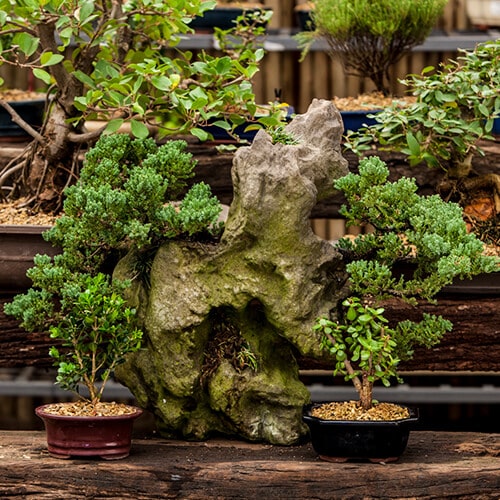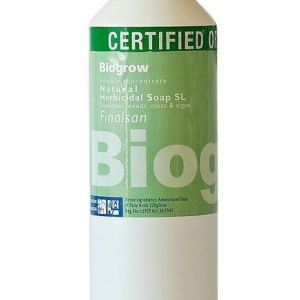Beginner’s guide to bonsai
DIY and how-to

An ancient Japanese art form, bonsai literally means to ‘plant in a tray’ and can be applied to any tree or shrub grown in a ceramic pot, then trained or styled by clipping or wiring, or both. Learn how to care for, cultivate and maintain yours with these bonsai care tips.
What you need in your bonsai kit:
- Bonsai secateurs
- Pokon Bonsai food
- Moss
- Spray bottle
- Bonsai mix
Tree varieties
Among indigenous trees, the most rewarding to grow as bonsai are:
- Acacia
- White Stinkwood
- Boer-bean
- Wild Olive
- Certain Wild Figs
Nonindigenous species that can be grown as bonsai include:
- Chinese Elm
- Japanese and Chinese Maple
- Cotoneaster
- June Snow
- Firethorn
Take note: Beginners should seek advice before attempting to train conifers, as not all the species are suitable bonsai subjects.
Positioning
Most bonsai trees are easier to care for outside. The rule of thumb is to provide the bonsai with as much light as they would receive in normal conditions.
Several bonsai species (eg. wild fig, Brush Cherry, Serissa) can be kept indoors with natural, indirect light. Place at least 30cm from a window (not directly next to a window) and keep away from heaters or air conditioners.
Containers
The selection of containers is important. Choose the best you can afford because good pottery is an investment. An authentic bonsai pot is well proportioned; principally rectangular or oval in shape. Its bottom will never be in contact with the surface it stands on because properly spaced, short legs are an integral part of its design. Genuine bonsai pots also feature very large drainage holes.
The glaze of a bonsai pot should be of a subdued colour, blazing hues and bold designs shatter the serenity of good bonsai projects. The composition of the potting soil is also important. In order to improve drainage and aeration, mix clean river sand into the potting soil.
Watering
Ensure the soil of your bonsai stays moist – never let your bonsai soil get bone dry, nor become sodden. In summer, bonsai soil must be watered frequently to prevent wilting. Water daily until water seeps out of the drainage holes of the pot.
To control humidity in summer, place on a drip tray filled with gravel and water. Ensure the pot sits on the gravel but does not come into contact with the water to avoid root rot. On warmer days, mist the foliage with a mist sprayer to get the dust off the leaves.
Occasionally, trees can be dunked in water for a few minutes. This ensures that the root base is watered thoroughly.
Fertilising
Deciduous trees should be fed once a month during the growing season. Evergreen trees must be fed once a month throughout the year. Follow the directions on the fertiliser package carefully to ensure that you don’t damage the tree, and don’t ever fertilise a sick tree.
Pruning
If you care for your tree properly, it should grow new leaves and branches. Control the height and shape of your bonsai and keep the foliage compact by pinching off the shoots found at the tips of the twigs regularly. Trim back any protruding roots once a year when refreshing the soil.
Sometimes, soft wire is coiled around young branches to bend them into shape. Do your style pruning during winter and wiring during the summer months.
Feeding
As the growing environment is so restricted, feeding is essential. Feed with Pokon bonsai food once a week and refresh the soil once a year by mixing bonsai mix into the soil.
Repotting and root clipping
Established bonsai should be repotted every 1–3 years in order to keep your tree healthy. Not only will your bonsai benefit from a fresh supply of soil, but this will also provide an opportunity to pay its roots some attention.
Root clipping or pruning involves trimming back large, thick roots, and helps prevent the bonsai plant becoming root bound (which makes it susceptible to drying out) and helps maintain the tree’s dwarf size. As a rule, the roots of young bonsai are trimmed every spring for the first three years of their lives. Thereafter, the roots should receive attention every third year. The roots of young trees will need to be trimmed more often than those of old bonsai, because young plants grow faster while old trees are more sedate.
The procedure is uncomplicated but should nevertheless be done correctly. If you’re new to bonsai and afraid to work with the roots, come in-store and one of our horticulturalists will gladly assist you.
You might also like
Shop online
-
PLASTIC POT GREEN 7.5CM – 38CM
- R9.99 – R149.99
- Select options This product has multiple variants. The options may be chosen on the product page Learn More
-
- Sale!
KITTEN MAINE COON 4KG
- Original price was: R839.99.R671.99Current price is: R671.99.
- Add to cart Learn More
-
FINALSAN 500ML
- R219.99
- Add to cart Learn More




